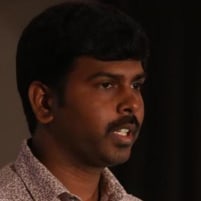-
Selenium: State of the Union
Selenium: State of the Union
Many things have happened since we did the last SeleniumConf in person. What is the latest in the Selenium project? Attend this keynote to learn what the Selenium team is doing to keep the project ahead, to help the community, to welcome contributions, and collaborations within the testing ecosystem.
Learn what the future of Selenium is, some of the pieces Selenium 5 will have, and how you can be part of the future of the project we all love!
Outline/Structure
- Selenium and SeleniumConf, how are they run and who makes all this possible.
- Project health
- How Selenium 4 has helped the project stay ahead and start shaping Selenium 5
- WebDriver BiDi - The Future
- Selenium and The WebDriver Ecosystem
- How can you help Selenium be better
- What is next
Learning Outcome
Learn what the future of Selenium is, some of the pieces Selenium 5 will have, and how you can be part of the future of the project we all love!
Target Audience
All -
Missed Opportunities: When Quality is Put In a Box.
Missed Opportunities: When Quality is Put In a Box.
Does it always feel like your team is chasing after quality? Are you taking steps to improve quality, but it never feels like it’s moving the needle? Join Erika Chestnut in this talk, where she explores the opportunities organizations miss when they put quality in a box. She’ll share creative ways to break out of the box and expand the role of quality beyond the test step. Don’t miss the opportunity to learn how to define, develop and drive a culture of quality that is bigger than the box.
Outline/Structure
- Problem
- Break down the vicious cycle of tech diminishing the value of the role of quality
- Pros/Cons: Pure test automation teams vs full stack quality engineering teams
- Socialize Quality
- Quality is not one size fits all - quality is not a single step
- Quality opportunities are everywhere
- Brand Quality
- Why?
- How?
- Champion Quality
- Influence from the left, right, and middle
- Cross the aisles to build a culture of quality
- Tell the story of quality: Metrics that matter vs mass destruction
Learning Outcome
By the end of this talk you’ll be able to:
- Socialize the full value of the quality team beyond the test step
- Leverage creative ways to make quality approachable and memorable
- Confidently champion quality standards, processes, and policies in order to build a culture of quality
Target Audience
All - Problem
-
What Exactly Do You Do in Test Automation?
What Exactly Do You Do in Test Automation?
If you took the time to sit down to answer the question “what do you do as an Automator on a daily, weekly or monthly basis”, what would you come up with? Would it just be coding, coding and more coding or would your answers highlight a wide and wonderful range of activities you carry out?
For a skilled Automator, success relies on more than just being comfortable with programming languages and tools. It requires a diverse range of skills, techniques and experiences which the newly released Ministry of Testing automation curriculum has captured and organised in a way so that everyone can see the abilities an Automator has or can attain.
In this talk, Mark will share how his own experiences and the experiences of other automators have helped curate the Ministry of Testing automation curriculum. Through these stories, we’ll learn how the journey of an Automator is a varied one that can easily employ pen, paper and questions as much as IDEs, frameworks and libraries. We’ll also learn how an open source community curated curriculum can help you regardless of your abilities, role and context and how you can help it grow by sharing your own experience.
Outline/Structure
The talk will start by introducing the current challenges with how we see ourselves as Automators and what we do. We'll look at how the impacts training, hiring and discourse around Automation as a topic. Then we'll learn about the Ministry of Testing automation curriculum and explore some stories that illustrate why, as Automators, we do more than code scripts and tests. Finally, we conclude with an invitation to the audience to share their experiences to help improve the curriculum for the future.
Learning Outcome
By the end of this talk you’ll be able to:
- Relate to the experiences of automators and their responsibilities
- Outline the diverse range of skills, knowledge and techniques and Automator requires
- Share your own experiences to support a community-curated curriculum for automators
Target Audience
All -
Q & A with the Selenium Committer's Panel
Q & A with the Selenium Committer's Panel
Q & A with the Selenium Committer's Panel moderated by Noemi Ferrara.
Outline/Structure
Moderated Q&A panel session with core contributors to the Selenium Project.
Learning Outcome
Learn what's to come in future releases of Selenium and WebDriver.
Target Audience
AllPrerequisites for Attendees
No prerequisites, just bring your questions!
-
Testing with Real Robots over the Internet: What Could Go Wrong?
Testing with Real Robots over the Internet: What Could Go Wrong?
When I started the Selenium project, I'd frequently describe Selenium as "like a robot" that is trapped inside your computer. For the past 11+ years, I've been testing that metaphor by building real mechanical robots for testing apps and devices, pushing the definition of "end" in end-to-end testing. Lately, I've been remotely controlling these robot over the internet, and learned some lessons I'd like to share. In this talk, I'll compare and contrast how testing with a physical robot over the internet is different than traditional testing approaches with Selenium or Appium.
Outline/Structure
- Overview of telerobotics and telepresence
- Why test with physical robots vs traditional approaches
- How testing with physical robots is different
- Motors
- Sensors
- Cameras
- Object locator strategies:
- "Traditional" approaches with OpenCV
- "AI" approaches with machine learning
- Challenges of testing with robots
- Lighting
- Latency
- Mechanical wear and tear
- Skills required
- "Does it scale?"
- Future work
Learning Outcome
Understanding of the costs, benefits, challenges, and opportunities of testing with robots.
Target Audience
AllPrerequisites for Attendees
Attendees should have a general interest in mobile testing and robots.
Links
Keynote - Don't Fear The Robot by Jason Huggins | AppiumConf Bengaluru 2019
Appium: The Untold Story - Dan Cuellar & Jason Huggins | AppiumConf London 2018
Robots: The Nuclear Option | SeleniumConf London 2016
Fixing HealthCare.gov, One Test at a Time | Selenium Meetup San Francisco 2015
World Domination: Next Steps | SeleniumConf Portland 2015
Teaching a Robot to Play Angry Birds | SeleniumConf London 2012














